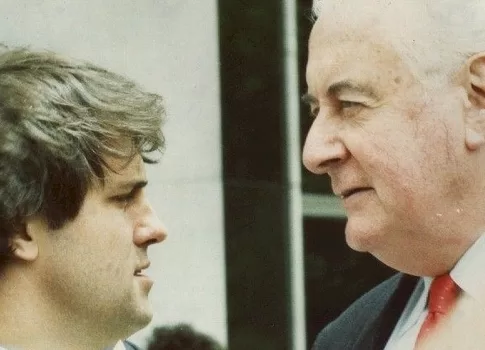The “Spycatcher” trial was a highly significant legal case that took place in Sydney, Australia in 1986. It revolved around the publication of a book called “Spycatcher” written by Peter Wright, a former MI5 officer. A young lawyrer, Malcolm Turnbull, defended Wright, called Gough Whitlam to the stand, and they eventually won the legal case. Word and Photos © by Mark Anning.
In this book “Spycatcher“, Peter Wright revealed classified information about MI5 operations, including details of alleged misconduct and illegal activities within the intelligence agency including explosive claims that MI5 was bugging and spying on political figures and foreign diplomats.
Wright claimed that he and a small group of MI5 officers plotted to force the resignation of the Labour prime minister Harold Wilson because they suspected that he was a communist spy.
Wright also claimed in “Spycatcher” that Sir Roger Hollis, former head of MI5, was a Soviet agent. Lord Trend, a former cabinet secretary, held a review in 1974 and found there was no evidence to support Wright’s claim.
The British government, led by Prime Minister Margaret Thatcher, was determined to prevent the publication of “Spycatcher” due to concerns about national security and the disclosure of sensitive information. The government argued that Wright had violated the Official Secrets Act by publishing classified information.
The trial and subsequent legal battles surrounding “Spycatcher” garnered significant international attention and media coverage. I was working for Australian Associated Press and stringing for The AP & the UK newspapers, and the photographs were published widely around the world. For a few days of the trial, I was the only photographer, but by the end there were dozens of photographers and TV crews.
Advertisement:
Gough Whitlam & Malcolm Turnbull at the Spy Catcher Trial, 1986
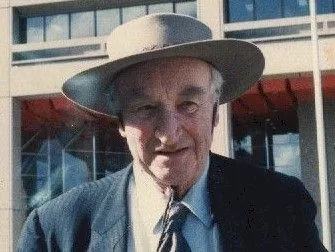
Peter Wright MI5 Assistant Director (retired) outside Sydney Supreme Court where he was embattled with the British Government over the publishing of his book: Spycatcher Photo by Mark Anning
The trial raised important questions about freedom of speech and the public’s right to know. Critics argued that the government was attempting to suppress information to avoid embarrassment rather than protect national security.
“Economical with the truth”
During the trial, Robert Armstrong, the UK Cabinet Secretary, famously used the phrase “economical with the truth” when asked about whether he had lied to protect the government’s interests. So much for swearing to “tell the truth, the whole and nothing but the truth”. This phrase became synonymous with political evasion and obfuscation and made “Saying of the Year” in the UK press.
“It contains a misleading impression, not a lie. It was being economical with the truth.”
Sir Robert Armstrong, Cabinet Secretary, during his evidence at the Peter Wright MI5 trial in Sydney, 1986
Despite the UK government’s efforts, “Spycatcher” was eventually published in various countries, including Australia and the United States. This led to legal battles and diplomatic tensions between these countries and the UK.
In 1988, the European Court of Human Rights ruled in favor of Wright’s right to publish his memoirs, stating that the British government’s actions violated his freedom of expression.
The MI5 Spycatcher trial was significant because it highlighted the tension between national security and the public’s right to know, sparked a global debate on freedom of speech, and exposed controversies within the British intelligence community.
Here are the key figures involved and their roles:
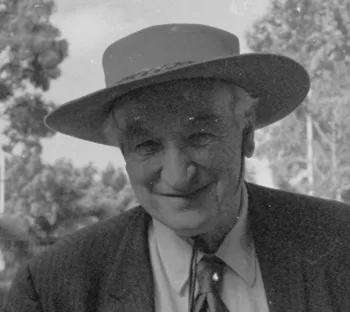

Peter Wright
He was a senior MI5 officer working for British intelligence from 1955 to 1976. In his book “Spycatcher,” Wright made a number of controversial claims about the operations and practices of MI5, including allegations of bugging and surveillance on politicians and public figures. Wright died aged 78 in 1995.
Malcolm Turnbull
Turnbull was a lawyer who played a significant role in the “Spycatcher” trial. He represented the Australian publisher of the book, Heinemann Australia, in the legal battle against the British government.
After graduating from Oxford University in the UK, the one-time journalist returned to Australia where he worked as a barrister for prominent figures such as Channel 9 owner Kerry Packer before making his name with the Spycatcher case.
Turnbull went on to start a merchant bank with Gough Whitlam’s son Nick, lead the Australian Republican Movement to a referendum on the issue in 1999, and become Prime Minister of Australia from 2015 until 2018. Malcolm Turnbull wrote a book, ‘The SpyCatcher Trial’, available on Amazon.
Margaret Thatcher
She was the Prime Minister of the United Kingdom at the time and played a central role in the government’s efforts to prevent the publication of “Spycatcher.” Thatcher and her government were concerned about the potential damage to national security and the intelligence services if the book were to be published.
Robert Armstrong
He was the Cabinet Secretary of the UK government and was involved in the trial. During the trial, Armstrong famously used the phrase “economical with the truth” when discussing the statements he had made to protect national security interests. This phrase became widely known and is often associated with attempts to withhold information.
Gough Whitlam
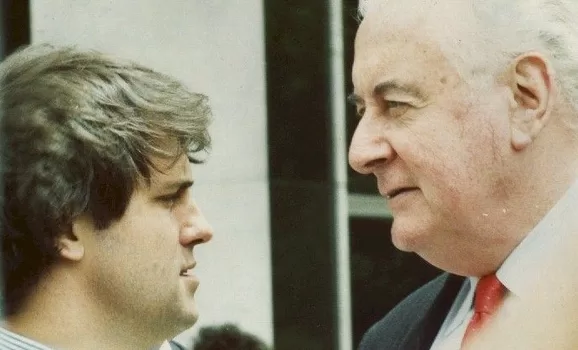

Prime Minister of Australia from 1972 until he was sacked by the Queen’s representative, Sir John Kerr in 1975. Amongst his many achievements, Gough Whitlam, was the founder of Australia-China diplomatic relations.
Malcolm Turnbull wrote about the circumstances of this photograph in his book … apparently Larry Emdur, myself and the other photographers are a “posse” because we chased the pair up Phillip St.
When they finally stopped at the pedestrian crossing and everyone else caught up with them, we were all laughing about the merry chase.
My photo was made on 1st December 1986 whilst working for Australian Associated Press and stringing (freelancing) for The AP & the UK newspapers. Here’s Malcolm Turnbull’s words describing the incident from his book, The SpyCatcher Trial, p 151
| “Whitlam’s performance was more than a little theatrical. The old politician revelled in the limelight. During the luncheon adjournment, while he was still giving his evidence in chief, we slipped out of the court building to walk up Macquarie Street where Whitlam had an appointment. A posse of photographers and television cameramen spotted us and within minutes we were facing a phalanx of lenses. Whitlam lost interest in our discussion, drew himself up to his full height, sucked in his belly, stuck out his chest and strode done the street like a Shakespearean actor. I hung back while the adoring mob trailed after him. You can take the man out of politics but, so it seems, you cannot take the politics out of the man” |
I remember it slightly differently. I’d been in the courtroom all morning watching Whitlam & Turnbull’s performance. Riveting stuff. When they adjourned, I ran downstairs taking up position on the corner, so I could spot them if they left the court from either the front or side doors.
Larry Emdur and I had teamed up during the week long trial – I often teamed with a TV crew on assignment – they aren’t exactly competition to a newspaper, and we can share intel, cab fares and bar tab.
I spied Whitlam and Turnbull sneaking out the side door and was off after them, Emdur and his TV crew not far behind. The rest of the ‘posse’ were hanging around the front door of the court, 50m away, but when they saw us take off, they grabbed their gear and joined the chase.
My best shots are in The AP image vault – one that I made while standing on a bus bench was pretty good – and Turnbull, Whitlam and I were all laughing at my antics getting the shot. Alas, when working for the wire services, they keep the negs so all I have left is a print of a few shots made during the trial.
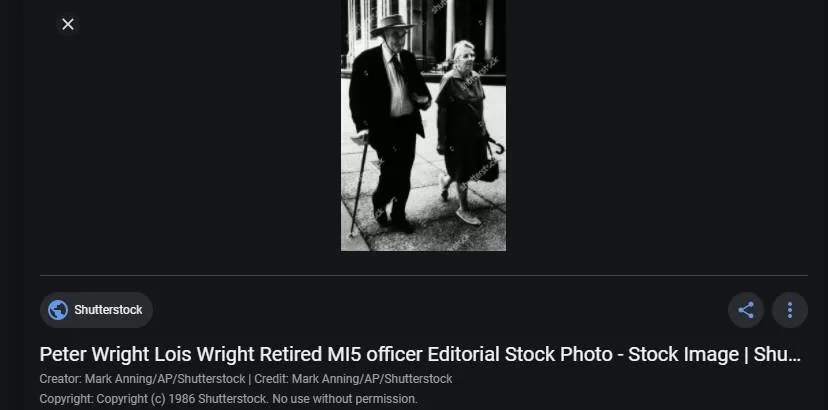

It appears that some of my photos are for sale, without permission or commission via Shutterstock via AP. They were supplied via The AP which apparently have resale rights, so I’m not suggesting they’ve been pinched. However, ‘No use without permission’ … guys, its my photo so I’m using it!
Significance of the “Spycatcher” trial
The significance of the “Spycatcher” trial lies in several key aspects:
Freedom of Speech vs. National Security: The trial raised important questions about the balance between freedom of speech and the government’s duty to protect national security. It sparked a debate about the limits of official secrecy and the public’s right to know.
British editions of The Economist ran a blank page with a boxed explanation that:
| In all but one country, our readers have on this page a review of ‘Spycatcher,’ a book by an ex-M.I.5-man, Peter Wright. The exception is Britain, where the book, and comment on it, have been banned. For our 420,000 readers there, this page is blank – and the law is an ass. |
International Attention: The trial received widespread international attention, partly due to the attempts by the British government to prevent the book’s publication not only in the UK but also in other countries, including Australia.
Impact on UK Law: The case led to significant legal developments, particularly in the area of government secrecy and freedom of the press. It highlighted the need for clearer legal frameworks in cases where issues of national security intersect with freedom of speech.
The trial concluded with a victory for the British government, which managed to prevent the publication of “Spycatcher” in the UK, but not Scotland, for a period of time. However, the book was still published in other countries, and its contents became widely known. The case remains a landmark in the legal and ethical debates surrounding government secrecy and freedom of information.
Related stories
Gough Whitlam, the founder of Australia-China diplomatic relations
Is AUKUS damaging Australia’s relationship with China?
Auckland Commonwealth Games 1990, AAP Picture Editor’s Story
High Court Grants Assange Permission to Appeal Extradition
These books on the subject are available from Amazon
The Great Seal Bug Story from Murray SpyBusters is a crackin’ good spy yarn!
(Peter Wright cracked the case)
Spy Catcher: The Candid Autobiography of a Senior Intelligence Officer by Peter Wright
The spy catcher trial : the scandal behind the #1 best seller by Malcolm Turnbull
The spycatcher trial (USA) by Malcolm Turnbull
The Reluctant Republic (USA) by Malcolm Turnbull
Advertisement:


